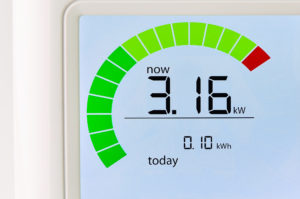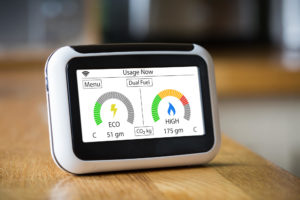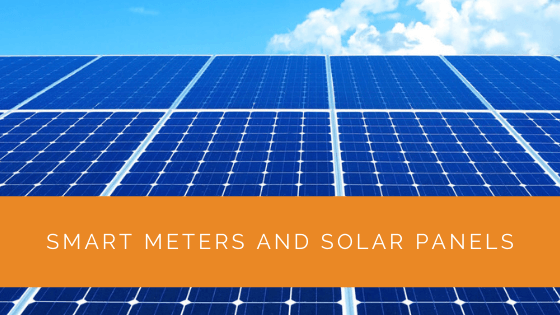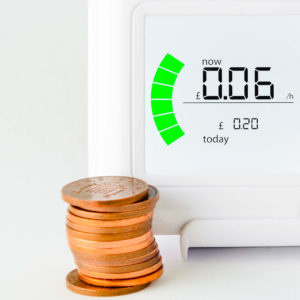Are you concerned about the environment and the high energy bills that are draining your wallet? If so, you’ll be pleased to know that there’s a solution that can help you address both issues simultaneously. Thanks to the integration of smart meters and solar panels, homeowners can now enjoy a more sustainable and cost-effective energy future.
The combination of smart meters and solar panels creates a synergy that benefits homeowners, the environment, and energy suppliers alike. By leveraging the power of solar energy and using smart meters to manage and monitor energy consumption, homeowners can reduce their environmental footprint and save money on their energy bills. In this article, we will take a deep dive into the world of Smart Meters and Solar Panels, exploring their functions, revealing their connection, and discussing their advantages and potential drawbacks. Whether you’re a homeowner, an energy supplier, or simply someone who cares about the environment, this article will empower you with the knowledge you need to embrace this powerful combination and contribute to a greener, more sustainable future.
Contents
- 1 Key Takeaways
- 2 What are Solar Panels?
- 3 What are Smart Meters?
- 4 Smart Meters and Solar Panels: The Connection
- 5 The Working Mechanism
- 6 Which UK Energy Companies Follow This Model?
- 7 What are the Benefits of Smart Meters?
- 8 Does a Smart Meter have Disadvantages?
- 9 Is it Compulsory to Have a Smart Meter?
- 10 How Will They Install a Smart Meter?
- 11 Do I Have to Pay for a Smart Meter?
- 12 Are Smart Meters Safe?
- 13 Smart Meters and Your Feed-In Tariffs
- 14 How to Read a Smart Meter Display?
- 15 Case Study: Smart Meters and Solar Panels in a Household
- 16 Expert Insights from Industry Specialists About Smart Meters and Solar Panels
- 17 Discover the Power of Solar with Solar Panels Network
- 18 Final Thoughts
Key Takeaways
- The UK Government introduced the Smart Export Guarantee (SEG) on January 1, 2020, to incentivise energy exports, replacing the Feed-In-Tariff. This scheme benefits carbon heating generators and homeowners with solar panels, but a smart meter is required for eligibility.
- Smart meters are digital devices that measure and record energy usage, sending data to utilities regularly. They eliminate the need for manual meter readings, can help save energy, and alert suppliers to power issues. There are two common types: SMETS1 and SMETS2.
- Smart meters and solar panels are integrated to track solar energy consumption accurately. This data is sent to energy suppliers via a communication network, allowing households with solar panels to benefit from incentives under the Smart Export Guarantee (SEG).
What are Solar Panels?
Solar Panels are known by different names: solar PV panels, photovoltaic panels, solar cell panels, etc. So, how do solar panels work, and how do they generate electricity? Simply put, most solar panels use the sun’s energy for electricity generation through the photovoltaic effect.
The panels use crystalline silicon cells or thin-film cells for this purpose. These cells are connected in series and are joined with a PV junction box. It is through the box that solar energy, as electricity, is supplied to households.
The three common types of solar panels are Monocrystalline panels, Poly-crystalline panels, and Thin-film solar panels.

What are Smart Meters?
The function of smart meters is to measure and record energy usage levels. In this regard, they are very similar to traditional energy meters. However, a smart meter is a digital device that can record energy consumption levels and send the data regularly to the utilities, keeping track of the same.
In the UK, smart meters relay data using the DCC, a nationwide communication network.
A smart meter can even send data every 15-60 minutes. Consequently, this eliminates the need to take precise meter readings towards the end of a billing cycle. Further, most smart meters come with a home display that can keep you updated about the energy consumed in a day. In this way, you can save energy by keeping tabs on your household’s daily energy consumption.
Further, some smart meters can also alert energy suppliers about power shortages and outages. That allows suppliers to resolve issues quickly and restore the power supply as soon as possible.
In the UK, two types of smart meters are common: First Generation Smart Meters and Second Generation Smart Meters. Take a look at what they are:
First Generation Smart Meters
Also known as SMETS1, the first-generation smart meters were the most commonly used. However, they are characterised by a major drawback. If you switch energy suppliers, the first-generation smart meter will go unresponsive or ‘dumb’ and stop relaying energy consumption data to the new supplier.
While this defeats the purpose, there’s still a silver lining. The display will continue to provide data about your daily energy consumption, making it easier to track the readings manually. Nevertheless, an SMETS1 upgrade is in the pipeline to make the smart meter compatible with multiple energy suppliers and prevent them from going numb and unresponsive upon a switch.
Second-Generation Smart Meters
Popularly known as the SMETS2, the second-generation smart meters are advanced versions of their predecessors. These meters ensure optimum compatibility with multiple utilities. So, even if you switch to a new energy supplier, the SMETS2 can relay energy consumption data to the new supplier via the DCC.
It’s a bit hard to distinguish between SMETS1 and SMETS2. So, how will you know which type of smart meter you have? Before 2018, the UK only had SMETS1 meters. If your smart meter was installed before 2018 or in early 2018, the chances are that you have a SMETS1 meter.
Smart Meters and Solar Panels: The Connection
Many solar energy-powered households in the UK used to face a problem. Since the meter readings used to be estimated, their energy bills were always approximate and never accurate. It made things difficult for both the energy supplier and the households involved.
To counter this problem, the UK government introduced a combination of solar panels and smart meters. By pairing them both, it became possible to keep household owners informed of their solar energy consumption while also letting them know how much national grid electricity they used.
The smart meters pass the same data to energy suppliers through the DCC, a communication network the UK government created solely for this purpose. Further, it was found that the smart meters were very efficient in tracking the amount of energy that households were feeding back into the grid, enabling the government to provide incentives under the smart export guarantee.
The Working Mechanism
This is how the combination of smart meters and solar panels works:
- The smart meter will monitor solar energy consumption information during fixed intervals (every 15, 30, or 60 minutes, depending on the frequency).
- The information is passed on to the energy supplier directly via the DCC.
- The smart meter might sometimes relay the information to a communications company between the smart meter and the energy supplier.
- The energy supplier tracks the information received over a billing period.
- Households are then sent accurate energy bills in keeping with their solar energy consumption over a month.
Therefore, the solar panel-smart meter integration paved the way for efficient tracking of solar energy consumption.
Which UK Energy Companies Follow This Model?
By 2025, the UK government has mandated that every renewable and non-renewable energy supplier offer their customers households a smart meter. Given this mandate and the SEG, it is very likely that every energy company will have to pair its energy supply with a smart meter.
Some of the energy companies across the UK have already embraced the solar panel-smart meter model, and they are as follows:
- EDF Energy
- British Gas
- First Utility
- Ovo Energy
- Utilita
- Bulb
- Octopus

What are the Benefits of Smart Meters?
The benefits of smart meters are multi-fold. Some of them include:
- Accuracy: Given their ability to regularly monitor energy usage, a smart meter can equip homeowners with accurate, real-time data.
- Cost-Effective: Due to improved accuracy, smart meters make it possible for solar energy suppliers to send households energy bills of the right amount. Further, customers need not pay the meter reading costs associated with the traditional electricity and gas meters.
- Reduced Energy Wastage: Household owners can use the information provided by the smart meters to reduce their energy consumption. A lot of energy can be saved in this process.
- Safety: All smart meters adhere to safety regulations and are safe to use.
- Environment Friendly: The UK government introduced smart meters as a part of its initiative to establish a national grid that can provide efficient, renewable, and reliable energy to households nationwide.
- Lower Tariffs: An increasing number of electricity suppliers in the UK have begun to offer discounts on the tariffs to households with a smart meter fitted.
- Incentives: As mentioned earlier, households with installed solar panels can become eligible for incentives under the smart export guarantee upon installing a smart meter to measure the amount of energy they export to the grid.
Does a Smart Meter have Disadvantages?
As is the case with any technological device, smart meters also have a couple of downsides:
- Poor Connectivity: At times, smart meters might face signal issues, rendering them unable to communicate with the DCC.
- Incompatibility: Even though many solar energy suppliers offer smart meters to households, quite a few still don’t support them.
- Installation: Smart meters require professional installation services, irrespective of whether they are SMETS 1 or SMETS2. The process can take a couple of hours.
- Occasional Inaccuracy: The In-Home Display (IHD) may sometimes show inconsistent and inaccurate information you need to be wary of.
Is it Compulsory to Have a Smart Meter?
Here’s the thing. Earlier this year, the UK administration introduced a new regulatory policy in July. Under this policy, every major energy supplier must comply with the pan-nation rollout of smart meters.
By 2025, every household and commercial establishment across the UK should be offered a smart meter by their energy provider. If providers fail to do this, it will be considered a breach, and their licenses could be revoked.
Further, the administration has asked energy providers to ensure that households with SMETS1 installed are connected with a communications company to ensure their functionality even if customers switch to a different supplier.
So, while it looks like it will be compulsory to have smart meters installed, you can still work around it. Many energy companies understand that customers have questions about smart meters. They have dedicated teams to handle your queries and walk you through the process.
How Will They Install a Smart Meter?
If you want to switch to the solar panel and smart meter combination, your energy provider will collaborate with third-party services. Here’s what you can expect:
- The technicians will first inspect your gas or electricity meters.
- After that, they will likely shut down your power supply temporarily.
- They will follow the Smart Metering Installation Code of Practice.
- As part of the Code, your energy supplier’s responsibility is to explain everything related to the smart meter, including how it works and how the information collected will be used.
Consider installing a meter while fitting solar panels on the roof to make things easier.

Do I Have to Pay for a Smart Meter?
You don’t have to pay for a smart meter directly. Your energy provider is responsible for providing you with a free smart meter. However, any costs associated with the smart meter installation and maintenance may be included in your energy bills, similar to how costs for traditional meters are handled.
Are Smart Meters Safe?
Smart meters are very safe. Most of them are bound by the EU and the UK Safety Regulations. This means that they are subjected to thorough testing processes. For that matter, a nationwide study even found that most meters exceed the required safety standards significantly.
Even the UK’s leading health organisations, like Public Health England, have stated that the frequency range of these meters is less than that of other common appliances, like television sets.
Moreover, given that these meters transmit information over a super-private network, there are few opportunities for anyone to hack into the transmission between your generation meter and the IHD.
Smart Meters and Your Feed-In Tariffs
This question is often asked: Will the meter affect my feed-in tariff? To answer your question: Yes, given that the SEG replaced the tariff system in 2020. However, you will find that the SEG tariff system is better due to the incentives you and other households are entitled to if you feed the surplus energy back to the grid.
Nevertheless, you can still benefit from the Feed-In Tariff scheme if registered. Even in this case, you can send your exported solar energy back to the national grid and get paid for it.
How to Read a Smart Meter Display?
Here’s a scenario for you to consider. Let’s say your SMETS1 has lost connectivity and stopped relaying energy usage information to your provider. In that case, you will have to take a manual reading. Thankfully, it’s very easy to take a reading.
It would be best to choose your display’s ‘meter reading’ section to view the relevant information. If you face any issues, it would be best to contact your energy provider.
Metering data covering power metrics like voltage, current, and other related fields will be found. Jot them down, and send them along to your power supplier.
Case Study: Smart Meters and Solar Panels in a Household
Background
A family in London decided to install solar panels on their home to reduce their carbon footprint and lower their electricity bills. They also opted for a smart meter to maximise the benefits of their solar energy system and take advantage of the Smart Export Guarantee (SEG).
Project Overview
The family worked with Solar Panels Network, a reputable solar installation company, to set up their system. The project aimed to provide accurate monitoring of their solar energy production and consumption while allowing them to export surplus energy to the grid efficiently.
Implementation
- Installation of Solar Panels: The team installed a 4 kWp solar PV system on the family’s south-facing roof. This system was chosen for its optimal size and efficiency, given the available roof space and the family’s energy consumption needs.
- Smart Meter Installation: An SMETS2 smart meter was installed to ensure compatibility with future energy suppliers. This meter provided real-time data on energy usage, solar energy production, and the amount of energy exported back to the grid.
- Integration and Monitoring: The smart meter was connected to the solar PV system, allowing for seamless tracking and reporting of energy data. The family could monitor their energy consumption and production via a user-friendly in-home display and an online portal.
Results
- Energy Savings: The family experienced a significant reduction in their electricity bills, saving approximately £300 annually.
- Smart Export Guarantee Earnings: They earned additional income from the SEG by exporting surplus energy back to the grid, which was accurately tracked by the smart meter.
- Enhanced Awareness: The family became more aware of their energy usage patterns and could make informed decisions to reduce consumption further.
Summary
This case study highlights the practical benefits of integrating smart meters with solar panels. The London household enjoyed reduced energy bills, additional income from exported energy, and a heightened awareness of their energy usage. This setup not only supported their financial goals but also contributed positively to environmental sustainability.
Expert Insights from Industry Specialists About Smart Meters and Solar Panels
Smart meters have transformed the way homeowners monitor and manage their energy consumption. By integrating them with solar panels, you not only optimise the efficiency of your energy use but also gain greater control over your energy costs and environmental impact.
Energy Efficiency Consultant
While the initial rollout of smart meters faced some challenges, the technology has matured significantly. Now, with SMETS2 meters, even if you switch suppliers, the data transfer is seamless, ensuring continuous and accurate monitoring of solar energy production and consumption.
Renewable Energy Analyst
The combination of smart meters and solar panels offers an excellent opportunity for homeowners to take advantage of the Smart Export Guarantee (SEG). By accurately tracking excess energy fed back into the grid, households can earn money and contribute to a more sustainable energy network.
Solar Installation Expert
Discover the Power of Solar with Solar Panels Network
Are you navigating the world of solar installations? Look no further than Solar Panels Network, the UK’s trusted partner in harnessing the sun’s potential. Our dedication goes beyond just installations; we’re on a mission to transform how homeowners and businesses across the UK perceive and utilise energy. By choosing us, you’re reducing your carbon footprint and making a smart financial move that promises savings for years ahead. Contact us today and embark on your solar journey.
Final Thoughts
While smart meters and solar panels are extremely useful technology, their benefits double when used together. However, in recent years, the UK’s decision to make smart meters compulsory has been met with resistance from energy suppliers and citizens alike.
For instance, a BBC report showed that of the 15 million smart meters installed in 2018, nearly 2.5 million were either faulty, defective, or unoperational, raising concerns about their effectiveness.
Nevertheless, smart meters do have their advantages. This post discussed smart meters in detail, listed their pros and cons, explained their working mechanism, and illuminated the connection between solar panels and the meters.
Further, we covered important topics like the safety and cost of the meters, the difference between SMETS 1 and SMETS2, and how to read the meter. In the end, it boils down to personal choice. If you want to read more related articles or if you want to know more, please feel free to reach out to us!
About the Author
Solar Panels Network stands at the forefront of solar energy solutions, driven by a team of seasoned solar engineers and energy consultants. With over decades of experience in delivering high-quality solar installations and maintenance, we are committed to promoting sustainable energy through customer-centric, tailored solutions. Our articles reflect this commitment, crafted collaboratively by experts to provide accurate, up-to-date insights into solar technology, ensuring our readers are well-informed and empowered in their solar energy decisions.


